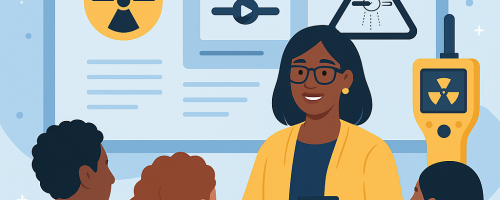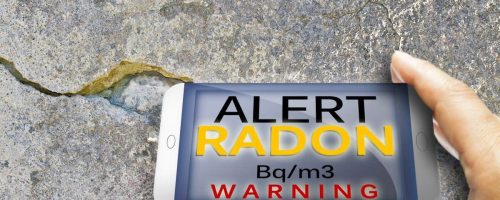As Canadians, we all want the cleanest, safest, most secure home environment to live in and raise our families. One way to do this is to monitor our homes for the quality of the air we breathe. Radon gas is not something we hear about every day in Canada however, radon exposure is a leading cause of lung cancer – second only to smoking.
Radon is a radioactive gas present in the soil and rocks around and beneath your home. Radon gas enters your home through cracks and gaps in floors and walls. It can be an issue in all types of homes: new or old, with finished or unfinished basements, regardless if they’re heavily sealed or drafty. While problems can be more concentrated in some areas of Canada, any home can be at risk.

While all Canadians should be concerned about the level of radon gas in their homes, it appears smokers are at a higher risk of developing lung cancer because of their exposure. In fact, the combined effects of radon exposure and smoking create a risk greater than the two separately. However, non-smokers are not immune: radon exposure is the leading cause of lung cancer in this population segment. In Canada, long-term exposure to radon causes around 2000 deaths every year.
There is nevertheless a bright side to all of this: a home with radon problems can be fixed, and the costs of repair are often low. But first, you need to find out if your home is affected by high concentrations of radon.
Testing your home’s radon levels is the key and the good news is – it’s easy. Radon is measured in units called “becquerels per cubic meter (Bq/m3)”, and the Government of Canada’s guideline for radon in indoor air is 200 Bq/m3. Health Canada recommends that steps be taken to reduce radon levels in any home that tests above the guideline. Inexpensive commercial testing units are available at retailers, radon testing service providers and from on-line and telephone distributors across Canada. Health Canada recommends a minimum three-month testing period to maximize testing accuracy and be able to estimate your annual average level. The most popular long-term radon detectors are the electrets and the alpha track detector. These devices are placed in a home and exposed to its air for a specified period of time, and then the testing kit is sent to a laboratory for analysis.
If your test’s result is above 200 Bq/m3, then you need to take action, but there’s no need to panic. Because health risks occur only after long-term exposure, Health Canada provides timelines for homeowners to remedy a radon problem. If your home’s radon levels are between 200-600 Bq/m3, then you should remediate your home to lower the radon level below the guideline within two years. If your home’s radon concentration is above 600 Bq/m3, then look to remedy that within a year.
Some quick and easy steps you can take that may help reduce radon levels in your home include:
- Renovating existing basement floors, particularly earth floors.
- Sealing cracks and openings in walls and floors, and around pipes and drains.
- Ventilating the basement sub-floors.
There is a wealth of information about radon on Health Canada’s website, at www.healthcanada.gc.ca/radon, including information on how to obtain a free booklet called Radon – A Guide for Canadian Homeowners. Knowing the risks of radon and testing your home for radon will go a long way towards ensuring a safe home for you and your family.






